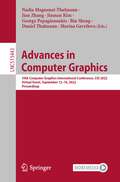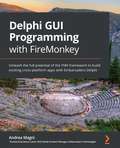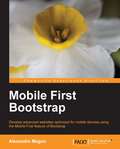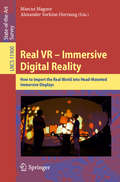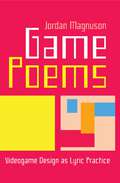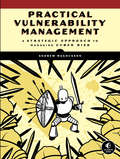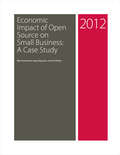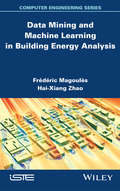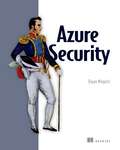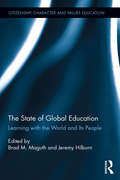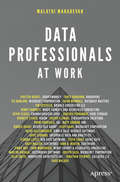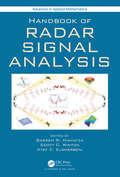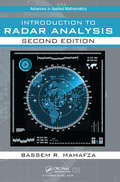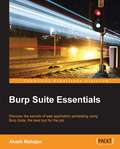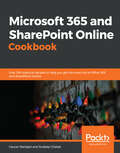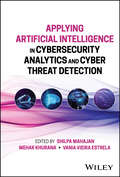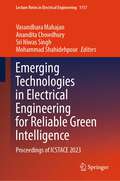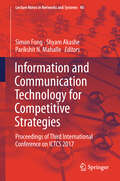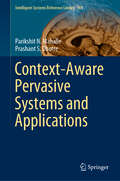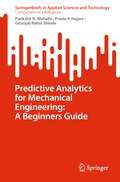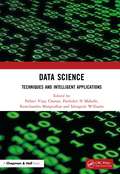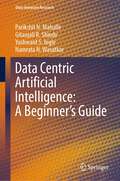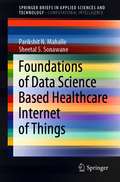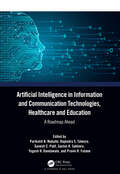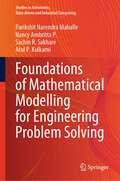- Table View
- List View
Advances in Computer Graphics: 39th Computer Graphics International Conference, CGI 2022, Virtual Event, September 12–16, 2022, Proceedings (Lecture Notes in Computer Science #13443)
by Nadia Magnenat-Thalmann Jian Zhang Jinman Kim George Papagiannakis Bin Sheng Daniel Thalmann Marina GavrilovaThis book constitutes the refereed proceedings of the 39th Computer Graphics International Conference on Advances in Computer Graphics, CGI 2022, held Virtually, during September 12–16, 2022. The 45 full papers included in this book were carefully reviewed and selected from 139 submissions. They were organized in topical sections as follows: image analysis & processing; graphs & networks; estimation & feature matching; 3d reconstruction; rendering & animation; detection & recognition; colors, paintings & layout; synthesis & generation; ar & user interfaces; medical imaging; segmentation; object detection; image attention & perception; and modeling & simulation.
Delphi GUI Programming with FireMonkey: Unleash the full potential of the FMX framework to build exciting cross-platform apps with Embarcadero Delphi
by Andrea Magni Marco CantuCreate modern yet effective multi-platform applications by building interactive UIs following a single codebase approach to boost productivityKey FeaturesDelve into the FireMonkey framework and explore its powerful capabilitiesEnhance the user experience by using various technologies included in Delphi and FMXBoost developer productivity through the cross-platform capabilities enabled by the frameworkBook DescriptionFireMonkey (FMX) is a cross-platform application framework that allows developers to create exciting user interfaces and deliver applications on multiple operating systems (OS). This book will help you learn visual programming with Delphi and FMX.Starting with an overview of the FMX framework, including a general discussion of the underlying philosophy and approach, you'll then move on to the fundamentals and architectural details of FMX. You'll also cover a significant comparison between Delphi and the Visual Component Library (VCL). Next, you'll focus on the main FMX components, data access/data binding, and style concepts, in addition to understanding how to deliver visually responsive UIs. To address modern application development, the book takes you through topics such as animations and effects, and provides you with a general introduction to parallel programming, specifically targeting UI-related aspects, including application responsiveness. Later, you'll explore the most important cross-platform services in the FMX framework, which are essential for delivering your application on multiple platforms while retaining the single codebase approach. Finally, you'll learn about FMX's built-in 3D functionalities.By the end of this book, you'll be familiar with the FMX framework and be able to build effective cross-platform apps.What you will learnExplore FMX's fundamental components with a brief comparison to VCLAchieve visual responsiveness through alignment capabilities and layout componentsEnrich the user experience with the help of transitions and visual animationsGet to grips with data access and visual data bindingBuild exciting and responsive UIs for desktop and mobile platformsUnderstand the importance of responsive applications using parallel programmingCreate visual continuity through your applications with TFrameStand and TFormStandExplore the 3D functionalities offered by FMXWho this book is forThis book is for Delphi developers who are looking to discover the full potential of the FireMonkey framework in order to build interactive cross-platform GUI applications and achieve an optimal UI/UX. Basic familiarity with Delphi programming and the VCL will be beneficial but not mandatory.
Mobile-first Bootstrap
by Alexandre MagnoA practical, step-by-step tutorial on developing websites for mobile using Bootstrap.This book is for anyone who wants to get acquainted with the new features available in Bootstrap 3 and who wants to develop websites with the mobile-first feature of Bootstrap. The reader should have a basic knowledge of Bootstrap as a frontend framework.
Real VR – Immersive Digital Reality: How to Import the Real World into Head-Mounted Immersive Displays (Lecture Notes in Computer Science #11900)
by Marcus Magnor Alexander Sorkine-HornungWith the advent of consumer-market Virtual Reality (VR) technology, the next revolution in visual entertainment is already on the horizon: real VR will enable us to experience live-action movies, sports broadcasts, concert videos, etc. in true visual (and aural) immersion. This book provides a comprehensive overview of the algorithms and methods that make it possible to immerse into real-world recordings. It brings together the expertise of internationally renowned experts from academia and industry who present the state of the art in this fascinating, interdisciplinary new research field. Written by and for scientists, engineers, and practitioners, this book is the definitive reference for anyone interested in finding out about how to import the real world into head-mounted displays.
Game Poems: Videogame Design as Lyric Practice
by Jordan MagnusonScholars, critics, and creators describe certain videogames as being “poetic,” yet what that means or why it matters is rarely discussed. In Game Poems: Videogame Design as Lyric Practice, independent game designer Jordan Magnuson explores the convergences between game making and lyric poetry and makes the surprising proposition that videogames can operate as a kind of poetry apart from any reliance on linguistic signs or symbols. This rigorous and accessible short book first examines characteristics of lyric poetry and explores how certain videogames can be appreciated more fully when read in light of the lyric tradition—that is, when read as “game poems.” Magnuson then lays groundwork for those wishing to make game poems in practice, providing practical tips and pointers along with tools and resources. Rather than propose a monolithic framework or draw a sharp line between videogame poems and poets and their nonpoetic counterparts, Game Poems brings to light new insights for videogames and for poetry by promoting creative dialogue between disparate fields. The result is a lively account of poetic game-making praxis. “Everyone who loves the true power of games will benefit from the treasure trove of insights in Game Poems.” — Jesse Schell, author of The Art of Game Design “Magnuson shines a sensitive and incisive light on small, often moving, videogames.” — D. Fox Harrell, Ph.D., Professor of Digital Media, Computing, and Artificial Intelligence, MIT “[Game Poems] tells a new story about games— that games can be lyrical, beautiful, emotionally challenging—to inspire creators and critics alike.” —Noah Wardrip-Fruin, author of How Pac-Man Eats “Even as the news swells with impending doom for creativity, writing, and text itself, this literate and crafty book pursues poetry not through implacable algorithms but in concrete and personal play. It should be an indispensable guide for anyone who aims to maintain the true, human promise of technical poetics.”—Stuart Moulthrop, coauthor of Twining: Critical and Creative Approaches to Hypertext Narratives “For far too long videogames have flourished – and commanded both capital and attention – in a kind of counterculture that they seem to have created as if ex nihilo for themselves and their players. But we are these players, and their culture has always been integrated with all of our own. In this evenhanded artist-scholar’s ars poetica Jordan Magnuson respects the material cultural specificity of videogames while regarding them through the ‘lens of poetry’ in order to discover – and help create – a practice and an art of Game Poems within the wider field. Magnuson formally, int(erv)entionally embraces this art as lyrically poetic.”—John Cayley, Brown University “In Game Poems, Magnuson listens carefully to videogames, and hears them speak to questions of art, language, and meaning that connect our written past to our software future. Read this book and you will hear it too.”—Frank Lantz, Director, NYU Game Center “Jordan Magnuson has created a work that ties together the worlds of poetry and videogames in a deep and enlightening way. For those of us who care about the potential of poetic games, Jordan greatly improves the language of how we talk about them and expands our ability to see what this unique form can become. This is one of my favorite books on game design and I apologize in advance to those whom I will end up cornering and not being able to stop talking to about it.”—Benjamin Ellinger, Game Design Program Director, DigiPen Institute of Technology “A groundbreaking and accessible book that helps us think about games as poems. With patient tenacity, Magnuson teases out what he felt for years as he engaged in his own practice of making videogames. His mission to help us apply a ‘
Practical Vulnerability Management: A Strategic Approach to Managing Cyber Risk
by Andrew MagnussonPractical Vulnerability Management shows you how to weed out system security weaknesses and squash cyber threats in their tracks.Bugs: they're everywhere. Software, firmware, hardware -- they all have them. Bugs even live in the cloud. And when one of these bugs is leveraged to wreak havoc or steal sensitive information, a company's prized technology assets suddenly become serious liabilities.Fortunately, exploitable security weaknesses are entirely preventable; you just have to find them before the bad guys do. Practical Vulnerability Management will help you achieve this goal on a budget, with a proactive process for detecting bugs and squashing the threat they pose.The book starts by introducing the practice of vulnerability management, its tools and components, and detailing the ways it improves an enterprise's overall security posture. Then it's time to get your hands dirty! As the content shifts from conceptual to practical, you're guided through creating a vulnerability-management system from the ground up, using open-source software.Along the way, you'll learn how to: • Generate accurate and usable vulnerability intelligence • Scan your networked systems to identify and assess bugs and vulnerabilities • Prioritize and respond to various security risks • Automate scans, data analysis, reporting, and other repetitive tasks • Customize the provided scripts to adapt them to your own needsPlaying whack-a-bug won't cut it against today's advanced adversaries. Use this book to set up, maintain, and enhance an effective vulnerability management system, and ensure your organization is always a step ahead of hacks and attacks.
Economic Impact of Open Source on Small Business: A Case Study
by Roger Magoulas Mike Hendrickson Tim O'ReillyOpen source is not only a catalyst for small business growth, but also a driver of future success for many startups today. Bringing together Bluehost anonymized customer data and trends with O'Reilly Media's job market data, along with other sources of trend data, this report captures the current state of open source as it relates to small to medium-sized businesses.
Data Mining and Machine Learning in Building Energy Analysis
by Frédéric Magoules Hai-Xiang ZhaoFocusing on up-to-date artificial intelligence models to solve building energy problems, Artificial Intelligence for Building Energy Analysis reviews recently developed models for solving these issues, including detailed and simplified engineering methods, statistical methods, and artificial intelligence methods. The text also simulates energy consumption profiles for single and multiple buildings. Based on these datasets, Support Vector Machine (SVM) models are trained and tested to do the prediction. Suitable for novice, intermediate, and advanced readers, this is a vital resource for building designers, engineers, and students.
Azure Security
by Bojan MagusicSecure your Azure applications the right way. The expert DevSecOps techniques you'll learn in this essential handbook make it easy to keep your data safe.As a Program Manager at Microsoft, Bojan Magusic has helped numerous Fortune 500 companies improve their security posture in Azure. Now, in Azure Security he brings his experience from the cyber security frontline to ensure your Azure cloud-based systems are safe and secure. In Azure Security you&’ll learn vital security skills, including how to: Set up secure access through Conditional Access policiesImplement Azure WAF on Application Gateway and Front Door Deploy Azure Firewall Premium for monitoring network activities Enable Microsoft Defender for Cloud to assess workload configurations Utilize Microsoft Sentinel for threat detection and analytics Establish Azure Policy for compliance with business rules Correctly set up out-of-the-box Azure services to protect your web apps against both common and sophisticated threats, learn to continuously assess your systems for vulnerabilities, and discover cutting-edge operations for security hygiene, monitoring, and DevSecOps. Each stage is made clear and easy to follow with step-by-step instructions, complemented by helpful screenshots and diagrams. About the technology Securing cloud-hosted applications requires a mix of tools, techniques, and platform-specific services. The Azure platform provides built-in security tools to keep your systems safe, but proper implementation requires a foundational strategy and tactical guidance. About the book Azure Security details best practices for configuring and deploying Azure&’s native security services—from a zero-trust foundation to defense in depth (DiD). Learn from a Microsoft security insider how to establish a DevSecOps program using Microsoft Defender for Cloud. Realistic scenarios and hands-on examples help demystify tricky security concepts, while clever exercises help reinforce what you&’ve learned. What's inside Set up secure access policies Implement a Web Application Firewall Deploy MS Sentinel for monitoring and threat detection Establish compliance with business rules About the reader For software and security engineers building and securing Azure applications. About the author Bojan Magusic is a Product Manager with Microsoft on the Security Customer Experience Engineering Team. Table of Contents PART 1 FIRST STEPS 1 About Azure security 2 Securing identities in Azure: The four pillars of identity and Azure Active Directory PART 2 SECURING AZURE RESOURCES 3 Implementing network security in Azure: Firewall, WAF, and DDoS protection 4 Securing compute resources in Azure: Azure Bastion, Kubernetes, and Azure App Service 5 Securing data in Azure Storage accounts: Azure Key Vault 6 Implementing good security hygiene: Microsoft Defender for Cloud and Defender CSPM 7 Security monitoring for Azure resources: Microsoft Defender for Cloud plans PART 3 GOING FURTHER 8 Security operations and response: Microsoft Sentinel 9 Audit and log data: Azure Monitor 10 Importance of governance: Azure Policy and Azure Blueprints 11 DevSecOps: Microsoft Defender for DevOps
The State of Global Education: Learning with the World and its People (Citizenship, Character and Values Education)
by Brad Maguth Jeremy HilburnA battle is being waged in classrooms and capitals around the world over the goals and objectives of the future of global education. While there is growing research in the area of global education, much remains to be uncovered, challenged, and learned through sound empirical research and conceptual explorations. What type of global citizens will schools promote? What types of policies, programs and instructional practices best promote effective global citizenship? Will global education curricula advance an unwavering loyalty to neoliberal ideologies and interests over the strengthening of human rights and the environmental health of our planet? This volume presents a series of research studies and innovative instructional practices centered on advancing global learning opportunities and literacies. The authors in this volume initiate a much needed conversation on ways students in multiple contexts can and should learn with the world and its people. Part I addresses global education in theory, with a particular focus on development, intercultural competence, and global citizenship. Part II addresses educational programs and practices that foster global learning and action to help build a better future for all citizens of our planet – including experiential education, university initiatives, and conceptual approaches to teaching and learning. This scholarship spans four continents in a multitude of educational contexts – primary, secondary, and tertiary - each with a focus on a different dimension of the possibilities and pitfalls in teaching about and with the world and its people.
Data Professionals at Work
by Malathi MahadevanEnjoy reading interviews with more than two dozen data professionals to see a picture of what it’s like to work in the industry managing and analyzing data, helping you to know what it takes to move from your current expertise into one of the fastest growing areas of technology today. Data is the hottest word of the century, and data professionals are in high demand. You may already be a data professional such as a database administrator or business intelligence analyst. Or you may be one of the many people who want to work as a data professional, and are curious how to get there. Either way, this collection helps you understand how data professionals work, what makes them successful, and what they do to keep up.You’ll find interviews in this book with database administrators, database programmers, data architects, business intelligence professionals, and analytics professionals. Interviewees work across industry sectors ranging from healthcare and banking to finance and transportation and beyond. Each chapter illuminates a successful professional at the top of their game, who shares what helped them get to the top, and what skills and attitudes combine to make them successful in their respective fields.Interviewees in the book include: Mindy Curnutt, Julie Smith, Kenneth Fisher, Andy Leonard, Jes Borland, Kevin Feasel, Ginger Grant, Vicky Harp, Kendra Little, Jason Brimhall, Tim Costello, Andy Mallon, Steph Locke, Jonathan Stewart, Joseph Sack, John Q. Martin, John Morehouse, Kathi Kellenberger, Argenis Fernandez, Kirsten Benzel, Tracy Boggiano, Dave Walden, Matt Gordon, Jimmy May, Drew Furgiuele, Marlon Ribunal, and Joseph Fleming. All of them have been successful in their careers, and share their perspectives on working and succeeding in the field as data and database professionals. What You'll LearnStand out as an outstanding professional in your area of data work by developing the right set of skills and attitudes that lead to successAvoid common mistakes and pitfalls, and recover from operational failures and bad technology decisionsUnderstand current trends and best practices, and stay out in front as the field evolvesBreak into working with data through database administration, business intelligence, or any of the other career paths represented in this bookManage stress and develop a healthy work-life balance no matter which career path you decide uponChoose a suitable path for yourself from among the different career paths in working with dataWho This Book Is ForDatabase administrators and developers, database and business intelligence architects, consultants, and analytic professionals, as well as those intent on moving into one of those career paths. Aspiring data professionals and those in related technical fields who want to make a move toward managing or analyzing data on a full-time basis will find the book useful. Existing data professionals who want to be outstanding and successful at what they do will also appreciate the book's advice and guidance.
Handbook of Radar Signal Analysis (Advances in Applied Mathematics)
by Bassem R. MahafzaThis new handbook on radar signal analysis adopts a deliberate and systematic approach. It uses a clear and consistent level of delivery while maintaining strong and easy-to-follow mathematical details. The emphasis of this book is on radar signal types and their relevant signal processing and not on radar systems hardware or components. This handbook serves as a valuable reference to a wide range of audience. More specifically, college-level students, practicing radar engineers, as well as casual readers of the subject are the intended target audience of the first few chapters of this book. As the book chapters progress, these grow in complexity and specificity. Accordingly, later chapters are intended for practicing engineers, graduate college students, and advanced readers. Finally, the last few chapters contain several special topics on radar systems that are both educational and scientifically entertaining to all readers. The presentation of topics in this handbook takes the reader on a scientific journey whose major landmarks comprise the different radar subsystems and components. In this context, the chapters follow the radar signal along this journey from its birth to the end of its life. Along the way, the different relevant radar subsystems are analyzed and discussed in great detail. The chapter contributors of this new handbook comprise experienced academia members and practicing radar engineers. Their combined years of academic and real-world experiences are in excess of 175. Together, they bring a unique, easy-to-follow mix of mathematical and practical presentations of the topics discussed in this book. See the "Chapter Contributors" section to learn more about these individuals.
Introduction to Radar Analysis (Advances in Applied Mathematics)
by Bassem R. MahafzaIntroduction to Radar Analysis, Second Edition is a major revision of the popular textbook. It is written within the context of communication theory as well as the theory of signals and noise. By emphasizing principles and fundamentals, the textbook serves as a vital source for students and engineers. Part I bridges the gap between communication, signal analysis, and radar. Topics include modulation techniques and associated Continuous Wave (CW) and pulsed radar systems. Part II is devoted to radar signal processing and pulse compression techniques. Part III presents special topics in radar systems including radar detection, radar clutter, target tracking, phased arrays, and Synthetic Aperture Radar (SAR). Many new exercise are included and the author provides comprehensive easy-to-follow mathematical derivations of all key equations and formulas. The author has worked extensively for the U.S. Army, the U.S. Space and Missile Command, and other military agencies. This is not just a textbook for senior level and graduates students, but a valuable tool for practicing radar engineers. Features Authored by a leading industry radar professional. Comprehensive up-to-date coverage of radar systems analysis issues. Easy to follow mathematical derivations of all equations and formulas Numerous graphical plots and table format outputs. One part of the book is dedicated to radar waveforms and radar signal processing.
Burp Suite Essentials
by Akash MahajanIf you are interested in learning how to test web applications and the web part of mobile applications using Burp, then this is the book for you. It is specifically designed to meet your needs if you have basic experience in using Burp and are now aiming to become a professional Burp user.
Microsoft 365 and SharePoint Online Cookbook: Over 100 actionable recipes to help you perform everyday tasks effectively in Microsoft 365
by Gaurav Mahajan Sudeep GhatakEmbrace modern solutions to enhance collaboration, teamwork, robotic process automation, and business intelligence in your organization using powerful Microsoft 365 services (formerly Office 365) Key Features Gain a complete overview of popular Microsoft 365 services using practical recipes and expert insights Collaborate with your team and external users effectively using SharePoint and Teams Create no-code and low-code solutions, such as bots, forms, dashboards, and workflows, using the Power platform Book Description Microsoft 365 in an integrated suite that provides intelligent tools for managing everyday organizational tasks like content management, communication, creating reports, and automating business processes. With this book, you'll get to grips with popular apps from Microsoft, with a focus on enabling workspace collaboration and productivity using Microsoft SharePoint Online, Teams, and the Power Platform to name a few. In addition to guiding you through the implementation of Microsoft 365 apps, this practical guide helps you to learn from a Microsoft consultant's extensive experience of working with the Microsoft business suite. Starting with a quick overview of the M365 ecosystem, the book covers recipes for implementing SharePoint Online for various content management tasks. You'll learn how to create sites for your organization and enhance collaboration across the business and then see how you can boost productivity with apps such as Microsoft Teams, Power Platform, Planner, Delve, and M365 Groups. Using a step-by-step approach, you'll also find out how to use the Power Platform efficiently, making the most of Microsoft PowerApps, Power Automate, PowerBI, and Power Virtual Agents. Finally, the book focuses on the SharePoint framework, which helps you to build custom Teams and SharePoint solutions. By the end of the book, you'll be equipped with the skills required to set up Microsoft 365 and SharePoint Online and be ready to enhance business productivity using a variety of tools. What you will learn Get to grips with a wide range of apps and cloud services in Microsoft 365 Discover ways to use SharePoint Online to create and manage content Store and share documents using SharePoint Online Improve your search experience with Microsoft Search Leverage the Power Platform to build business solutions with Power Automate, Power Apps, Power BI, and Power Virtual Agents Enhance native capabilities in SharePoint and Teams using the SPFx framework Use Microsoft Teams to meet, chat, and collaborate with colleagues or external users Who this book is for This book is for business professionals, IT administrators, enterprise developers and architects, and anyone who wants to get to grips with using M365 for effective implementation of Microsoft apps. Prior experience with Office 365 and SharePoint will assist with understanding the recipes effortlessly.
Applying Artificial Intelligence in Cybersecurity Analytics and Cyber Threat Detection
by Shilpa Mahajan Mehak Khurana Vania Vieira EstrelaAPPLYING ARTIFICIAL INTELLIGENCE IN CYBERSECURITY ANALYTICS AND CYBER THREAT DETECTION Comprehensive resource providing strategic defense mechanisms for malware, handling cybercrime, and identifying loopholes using artificial intelligence (AI) and machine learning (ML) Applying Artificial Intelligence in Cybersecurity Analytics and Cyber Threat Detection is a comprehensive look at state-of-the-art theory and practical guidelines pertaining to the subject, showcasing recent innovations, emerging trends, and concerns as well as applied challenges encountered, and solutions adopted in the fields of cybersecurity using analytics and machine learning. The text clearly explains theoretical aspects, framework, system architecture, analysis and design, implementation, validation, and tools and techniques of data science and machine learning to detect and prevent cyber threats. Using AI and ML approaches, the book offers strategic defense mechanisms for addressing malware, cybercrime, and system vulnerabilities. It also provides tools and techniques that can be applied by professional analysts to safely analyze, debug, and disassemble any malicious software they encounter. With contributions from qualified authors with significant experience in the field, Applying Artificial Intelligence in Cybersecurity Analytics and Cyber Threat Detection explores topics such as: Cybersecurity tools originating from computational statistics literature and pure mathematics, such as nonparametric probability density estimation, graph-based manifold learning, and topological data analysisApplications of AI to penetration testing, malware, data privacy, intrusion detection system (IDS), and social engineeringHow AI automation addresses various security challenges in daily workflows and how to perform automated analyses to proactively mitigate threatsOffensive technologies grouped together and analyzed at a higher level from both an offensive and defensive standpoint Providing detailed coverage of a rapidly expanding field, Applying Artificial Intelligence in Cybersecurity Analytics and Cyber Threat Detection is an essential resource for a wide variety of researchers, scientists, and professionals involved in fields that intersect with cybersecurity, artificial intelligence, and machine learning.
Emerging Technologies in Electrical Engineering for Reliable Green Intelligence: Proceedings of ICSTACE 2023 (Lecture Notes in Electrical Engineering #1117)
by Vasundhara Mahajan Anandita Chowdhury Sri Niwas Singh Mohammad ShahidehpourThe book includes peer-reviewed papers from the International Conference on Sustainable Technology and Advanced Computing in Electrical Engineering (ICSTACE 2023). The main focus of the book is to provide the global perspective of sustainable research related to computer advancement in electrical engineering. This involves the areas related to sustainable development. This volume covers artificial intelligence, machine learning, the Internet of Things (IoT), cloud computing, big data analysis, blockchain, cyber security of the smart grid, etc. The book focuses on the areas related to sustainable development and includes research works from academicians and industry experts. The book discusses new challenges and provides solutions at the interface of technology, information, complex systems, and future research directions.
Information and Communication Technology for Competitive Strategies: Proceedings Of Third International Conference On Ictcs 2017 (Lecture Notes in Networks and Systems #40)
by Parikshit N. Mahalle Shyam Akashe Simon FongThis book contains 74 papers presented at ICTCS 2017: Third International Conference on Information and Communication Technology for Competitive Strategies. The conference was held during 16–17 December 2017, Udaipur, India and organized by Association of Computing Machinery, Udaipur Professional Chapter in association with The Institution of Engineers (India), Udaipur Local Center and Global Knowledge Research Foundation. This book contains papers mainly focused on ICT for Computation, Algorithms and Data Analytics and IT Security etc.
Context-Aware Pervasive Systems and Applications (Intelligent Systems Reference Library #169)
by Parikshit N. Mahalle Prashant S. DhotreThis textbook explores the current challenges in and future prospects of context-aware pervasive systems and applications. The phenomenal advances in broadband technology and ubiquitous access to the Internet have transformed Internet computing into the Internet of Things (IoT), which is now evolving toward the Internet of Everything. Modern scientific, engineering, and business applications are increasingly dependent on machine-to-machine communication, wherein there is less human intervention. In turn, this creates a need for context-aware pervasive systems and applications in which RFID, sensors, and smartphones play a key role. The book provides an essential overview of context, context management, and how to perform context management in various use cases. In addition, it addresses context-aware computing and personalization, various architectures for context-aware systems, and security issues. The content is explained using straightforward language and easy-to-follow examples, case studies, technical descriptions, procedures, algorithms, and protocols for context-aware systems.
Predictive Analytics for Mechanical Engineering: A Beginners Guide (SpringerBriefs in Applied Sciences and Technology)
by Parikshit N. Mahalle Pravin P. Hujare Gitanjali Rahul ShindeThis book focus on key component required for building predictive maintenance model. The current trend of Maintenance 4.0 leans towards the preventive mechanism enabled by predictive approach and condition-based smart maintenance. The intelligent decision support, earlier detection of spare part failure, fatigue detection is the main slices of intelligent and predictive maintenance system (PMS) leading towards Maintenance 4.0 This book presents prominent use cases of mechanical engineering using PMS along with the benefits. Basic understanding of data preparation is required for development of any AI application; in view of this, the types of the data and data preparation processes, and tools are also presented in this book.
Data Science: Techniques and Intelligent Applications
by Parikshit N Mahalle Ramchandra Mangrulkar Idongesit Williams Pallavi ChavanThis book covers the topic of data science in a comprehensive manner and synthesizes both fundamental and advanced topics of a research area that has now reached its maturity. The book starts with the basic concepts of data science. It highlights the types of data and their use and importance, followed by a discussion on a wide range of applications of data science and widely used techniques in data science. Key Features • Provides an internationally respected collection of scientific research methods, technologies and applications in the area of data science. • Presents predictive outcomes by applying data science techniques to real-life applications. • Provides readers with the tools, techniques and cases required to excel with modern artificial intelligence methods. • Gives the reader a variety of intelligent applications that can be designed using data science and its allied fields. The book is aimed primarily at advanced undergraduates and graduates studying machine learning and data science. Researchers and professionals will also find this book useful.
Data Centric Artificial Intelligence: A Beginner’s Guide (Data-Intensive Research)
by Parikshit N. Mahalle Gitanjali R. Shinde Yashwant S. Ingle Namrata N. WasatkarThis book discusses the best research roadmaps, strategies, and challenges in data-centric approach of artificial intelligence (AI) in various domains. It presents comparative studies of model-centric and data-centric AI. It also highlights different phases in data-centric approach and data-centric principles. The book presents prominent use cases of data-centric AI. It serves as a reference guide for researchers and practitioners in academia and industry.
Foundations of Data Science Based Healthcare Internet of Things (SpringerBriefs in Applied Sciences and Technology)
by Parikshit N. Mahalle Sheetal S. SonawaneThis book offers a basic understanding of the Internet of Things (IoT), its design issues and challenges for healthcare applications. It also provides details of the challenges of healthcare big data, role of big data in healthcare and techniques, and tools for IoT in healthcare. This book offers a strong foundation to a beginner. All technical details that include healthcare data collection unit, technologies and tools used for the big data analytics implementation are explained in a clear and organized format.
Artificial Intelligence in Information and Communication Technologies, Healthcare and Education: A Roadmap Ahead
by Parikshit N. Mahalle Rajendra S. Talware Ganesh C. Patil Sachin R. Sakhare Yogesh H. Dandawate Pravin R. FutaneArtificial Intelligence in Information and Communication Technologies, Healthcare and Education: A Roadmap Ahead is designed as a reference text and discusses inter-dependability, communication and effective control for the betterment of services through artificial intelligence (AI), as well as the challenges and path ahead for AI in computing and control across different domains of business and human life. The book accommodates technologies and application domains including backbone hardware, systems and methods for deployment, which help incorporating intelligence through different supervised and probabilistic learning approaches. Features The book attempts to establish a connection between hardware, software technologies and algorithmic intelligence for data analysis and decision support in domains such as healthcare, education and other aspects of business and mobility. It presents various recent applications of artificial intelligence in information and communication technologies such as search and optimization methods, machine learning, data representation and ontologies, and multi-agent systems. The book provides a collection of different case studies with experimentation results than mere theoretical and generalized approaches. Covers most of the applications using the trending technologies like machine learning (ML), data science (DS), Internet of Things (IoT), and underlying information and communication technologies. The book is aimed primarily at advanced undergraduates and postgraduate students studying computer science, computer applications, and information technology. Researchers and professionals will also find this book useful.
Foundations of Mathematical Modelling for Engineering Problem Solving (Studies in Autonomic, Data-driven and Industrial Computing)
by Parikshit Narendra Mahalle Nancy Ambritta P. Sachin R. Sakhare Atul P. KulkarniThis book aims at improving the mathematical modelling skills of users by enhancing the ability to understand, connect, apply and use the mathematical concepts to the problem at hand. This book provides the readers with an in-depth knowledge of the various categories/classes of research problems that professionals, researchers and students might encounter following which the applications of appropriate mathematical models is explained with the help of case studies. The book is targeted at academicians, researchers, students and professionals who belong to all engineering disciplines.
